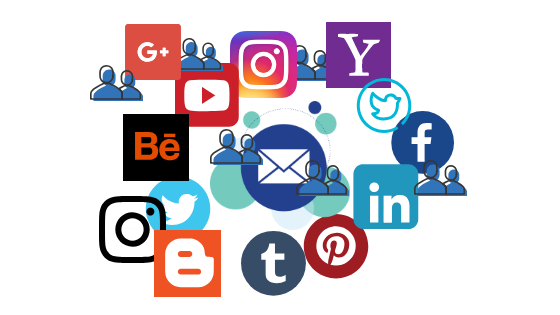Social Networks – Part I – The Great Transformation of Business and Society
Network Evolution: Our Behavior in the Media, Before and After the Internet
To study social networks in depth, one must think of their origins, which has moved so many people to adhere to a behavior so characteristic of today, to the point that we are surprised by the groups in the world that are not yet so used to social media. To do this, it is important to observe related behaviors before the Internet.

Scholars of sociology, communication, and history can go deep in the formation of societies in this subject, but we will briefly comment on what possibly is more related to current behavior, so that we can better understand the consequences and impacts for companies, for the future society and for several areas of knowledge.
First, it is important to observe the impact of media in societies in the historical context. Communication when it becomes written establishes a new level of government, of establishing laws, of commerce and, therefore, of growth. Associated with a transport network, communication was fundamental to the domination of some societies over others and more formal structuring of the states and the broader domain organizations that ultimately built the planet civilizations.
Since the Sumerians, printed and distributed communication has established itself as the mainstream media, and newspapers up to the beginning of the last century have largely dominated as a form of communication. However, at the beginning of the popularization of radios, there was an interesting fact that has been replicated to this day. A challenging new medium provoked some reactions:
- The dominating media providers fight innovative competition as they can.
- The population consumes, experiences innovation, and consolidates it creating a market space for the new media, being able to be complementary or substitute to the previous media
- Innovative media causes some change in social behavior.
- Part of the dominant media at some point embodies innovation and starts to produce it in the new market. In many cases, generating information in a complementary way in each media or communication channel.
In the case of radios, they worked well as a substitute for periods of lack of print media (for strikes or production damage). It was a good companion in difficult times of wars, and they provided a greater speed in the provision of information, unpublished for the time. Behavior in the consumption of the media was different. It was done not necessarily in an isolated way, but in a more interactive way and thus allowed different contents. The newspapers at the time, tried to criticize as being dangerous information, without treatment, of poor quality.
In the media that the radios have developed (along with the print media), specific publications have also started to appear for groups of consumers, such as magazines on military issues, on philosophy or literature, on the state of government, on commerce, on home care, etc. In the radios, besides the news, soap operas, weather forecast, sports, etc. This specialization then sought to reach certain niches.
Notice here an aspect of change in social behavior a long time ago. But also note that even at that time, there is a parallel we can make in the new social networks on the internet, at this very moment.
See how some sites that maintain social networks have generated a great impact of innovation and threatened the reign of other media and information channels. People started to consume novelties in a totally different way and largely producing their own information.
Is it not true that some networks compete with each other, and others are complementary? As some are generic and many others are niche, which is perhaps a big trend in modern networks.
See how the traditional media quickly seeks to absorb the new behaviors in their channels in the internet, in order to stay strong in the market.
And also note that on the way, some of these sites had to adapt (often faded) due to new competitors.
Society is still changing, and social networking technology will continue to innovate, supporting the drastic change in behavior we have lived through.
The fact is that today and always, people have a keen interest in being updated with the issues that interest them that impact their lives. Having this as fast as possible has always been of interest. Perhaps the production of information by the few and consumed by millions was more a contingency than a natural behavior in the development of societies. Today social networks allow each to be a more influential agent than yesterday’s passive figure. Business process automation, which is very developed in large companies, needs to go much further in the new media. Today the competition is less in control of the company and should be attentive to behavior in social networks, this is essential to their survival.
If you’re in a business, you’re producing consumer information in some media, if you need to help with the marketing, sales, customer care, customer support – then you need to be aware of what happens to social media, be aware of all this and take advantage of the innovations in your favor. This is what we will discuss in this series of posts about Social Networks.
(to be continued)
Main image from “Geralt” at pixabay.com